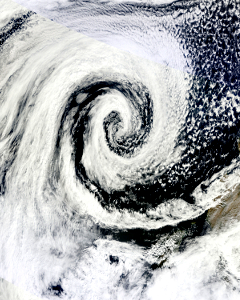WMO issues water warning
 The World Meteorological Organization (WMO) has highlighted growing threats to the planet's water cycle, driven by climate change and human activities.
The World Meteorological Organization (WMO) has highlighted growing threats to the planet's water cycle, driven by climate change and human activities.
The WMO's new report delivers a global assessment of water resources and warns of the escalating impacts of extreme events like floods and droughts, imperilling lives and economies.
To address these challenges, the report calls for a substantial shift in policies, including improved monitoring, cross-border cooperation, data sharing, and water resource assessments, all of which will need increased investments.
The report identifies how climate change exacerbates imbalances in the hydrological cycle, leading to serious consequences.
Melting ice, snow, and glaciers heighten flood risks and jeopardise the long-term water security of millions. Yet, despite these critical developments, the understanding of global freshwater resources remains inadequate.
The WMO's report says effective management demands accurate measurement at its foundation.
The WMO's State of Global Water Resources Report for 2022 builds upon a pilot version from the previous year, offering expanded insights into vital hydrological factors, such as groundwater, evaporation, soil moisture, and more.
The report integrates on-ground observations, satellite-based remote sensing data, and numerical modelling to create a global view of water resources.
“Glaciers and ice cover are retreating before our eyes. Rising temperatures have accelerated – and also disrupted – the water cycle. A warmer atmosphere holds more moisture. We are seeing much heavier precipitation episodes and flooding. And at the opposite extreme, more evaporation, dry soils and more intense droughts,” says WMO Secretary-General Prof Petteri Taalas.
The report advocates for increased data sharing, early warnings and integrated water management policies as crucial components of climate action.
Current estimates indicate that 3.6 billion people face insufficient access to water for at least one month per year, a number expected to rise to over 5 billion by 2050, as per UN Water.
The report shows that in 2022, over half of the world's catchment areas experienced deviations from normal river discharge, with many regions drier than usual.
More than 60 per cent of major water reservoirs saw below-normal inflow, posing challenges for water supply in an increasingly unpredictable climate.
Anomalies in soil moisture and evaporation mirrored river discharge conditions throughout 2022, impacting regions like Europe, where a heatwave and drought led to increased evaporation, decreased soil moisture, and river flow disruptions.
The anticipated shift from La Niña to El Niño conditions in 2023 is expected to significantly impact the hydrological cycle, a key area of focus in the next year's report.
The report also highlights the significant impact of climate change on the Third Pole, which includes the Tibetan Plateau, the Himalayas, and other mountain ranges.
Between 2000 and 2018, glacier mass balance decreased by over 4 per cent, contributing to declining snow cover and a surge in glacial lake volumes.
These changes affect river runoffs in regions like the Indus, Amu Darya, Yangtze, and Yellow River basins, with consequences for water supply.
In 2022, the Alps experienced reduced snow cover, essential for major rivers like the Rhine and Danube, while the subtropical Andes reported declining winter snow accumulation since 2009, impacting water supplies for Chile and parts of Argentina.
Despite some above-average snowfall in 2022, key watersheds still faced below-average conditions, resulting in water restrictions.
Additionally, the report shows droughts in Europe in 2022 disrupted transportation and electricity production, while the USA faced low water levels on the Mississippi River due to an ongoing drought.
South America's La Plata river basin experienced a prolonged drought since 2020, leading to a drop in hydropower production.
In China, the Yangtze River Basin suffered from lower-than-average river discharge and soil moisture due to severe drought.
Meanwhile, the Horn of Africa grappled with a humanitarian crisis resulting from prolonged drought, while the Niger Basin and parts of South Africa experienced above-average river discharge due to major flood events.
The Indus River Basin in Pakistan saw a mega flood, causing substantial damage.
The report emphasises the lack of accessible, verified hydrological data, particularly in Africa, the Middle East, and Asia.
It says urgent investments in monitoring and data sharing are required, aligning with the WMO's Unified Data Policy. The development of the WMO Hydrological Status and Outlook System (HydroSOS) aims to address this data deficit.
The 2022 edition of the Global State of Water Resources Report aso shows some significant improvements, with new chapters on groundwater, soil moisture, evapotranspiration, snow and ice, and reservoir inflows.
While the number of observed discharge data has substantially increased, limitations in data sharing persist, leaving regions like Africa, the Middle East, and Asia underrepresented in observational data.







 Print
Print